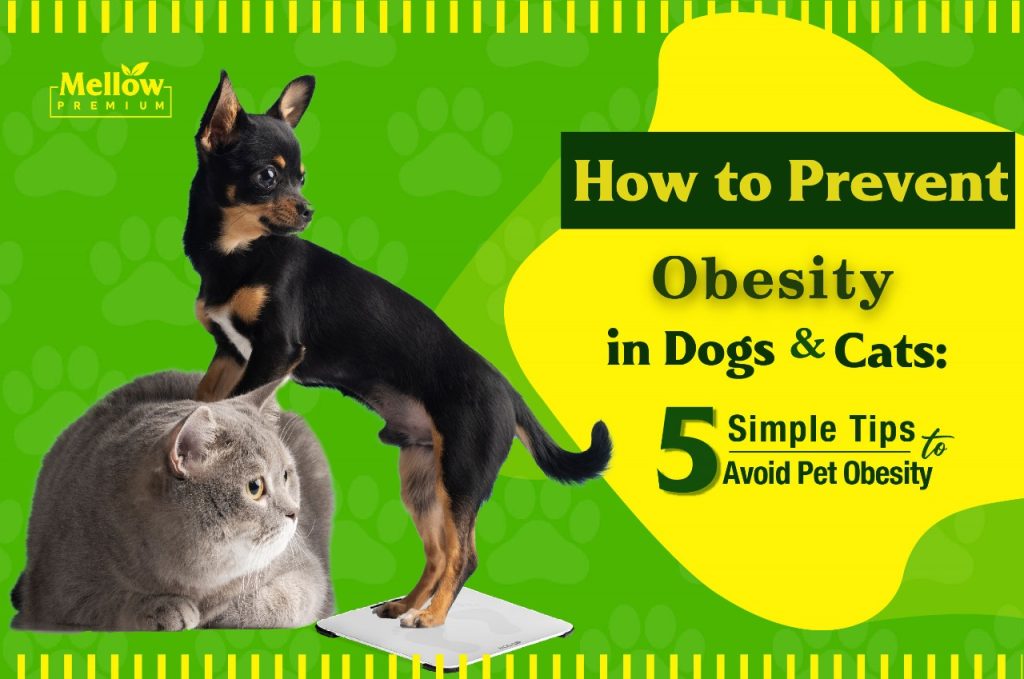A chubby doggo or kitty cat may look adorable, but there’s nothing cute about obesity.
Pet obesity, which affects up to 65% of dogs and almost 60% of cats in the US, may lead to major health issues like arthritis in dogs and diabetes in cats. It also decreases their quality of life and shortens their life span.
To raise awareness of pet obesity and help prevent the same, this National Pet Obesity Day we explore the best 5 ways to avoid obesity in dogs and domestic cats.
5 Simple Tips to Prevent Pet Obesity
Know Your Pet’s Ideal Weight and Keep an Eye on It
Knowing your pet’s ideal weight is essential for preventing obesity. The exact value depends on their breed, age, and size, so it’s best to consult your vet. They will tell you the best weight range for your doggo or cat. Also, it’s wise to take your pet for a monthly weight checkup.
Choose the Right Food
Food plays great importance in your pet’s health and overall wellness. That’s why you should choose wisely and invest in high-quality food and all-natural treats for dogs or cats.
If you’re a first-time pet owner, it’s best to ask your vet which food to feed your fur kid with. They’ll suggest the best options based on your pet’s age and needs, especially if they’re older. For instance, pups need a food specially formulated for their age whereas senior dogs need food fortified with nutrients for optimal health or specific nutrients for their health condition.
Watch Out for the Treats
Speaking of food, you need to be careful when choosing treats for dogs and cats. Not all treats are made equal. Some are made of all-natural ingredients and free from additives and preservatives while others are packed with unhealthy ingredients like artificial binders and fillers which may lead to quick weight gain.
Control Portion Size
Don’t overfeed your pet! It’s very easy to do it because you’re not sure how much to fill their bowl. Although you can find the recommended portion size on the food packaging, it’s best to ask your vet how to dose your pet’s food and how many treats per day to give them. After all, dogs and cats at different stages of their lives have different metabolisms, hence requiring a different serving size.
The basic rule is to avoid filling your dog or cat’s bowl and giving them leftovers from your plate. Also, you should feed them at specific times. Your pet will quickly learn when their meals are served and won’t beg for food all the time.
Keep Your Pet Active
Last but not least, physical activity is imperative for your pet to maintain a healthy weight. So, give them plenty of exercise, set a daily walking routine, and plan indoor and outdoor activities for your doggo or feline friend.
Final Thoughts
With more than half of dogs and domestic cats in the US being overweight or obese, it’s paramount to keep an eye on your pet’s weight. From choosing the right food and treats for your dog or cat to portion size and exercising, you need to consider all these things to successfully prevent pet obesity. And, of course, always consult with your vet regarding your pet’s health and weight.
 CA
CA  USA
USA 
